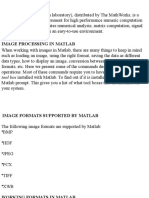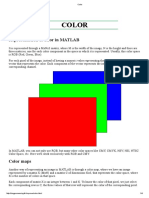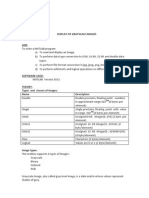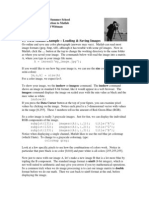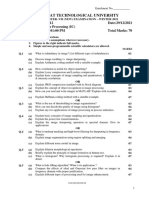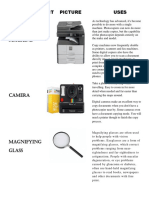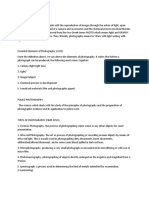0% found this document useful (0 votes)
42 views17 pagesDigital Images Processing: 4 Class Dr. Majid Dhirar
This 3-sentence summary provides the key information about representing and manipulating digital images from the given document:
Digital images can be represented as matrices, with each element corresponding to a pixel that can be a certain color value; MATLAB stores most images as 2D arrays and allows loading common file formats like JPG, BMP, and PNG, as well as manipulating images by accessing pixel values with row and column indices or converting between color formats. Common color representations include binary, grayscale, RGB, CMYK, and HSV, while functions like imread and imwrite allow loading, displaying, and saving images as matrices.
Uploaded by
MarsCopyright
© © All Rights Reserved
We take content rights seriously. If you suspect this is your content, claim it here.
Available Formats
Download as PPTX, PDF, TXT or read online on Scribd
0% found this document useful (0 votes)
42 views17 pagesDigital Images Processing: 4 Class Dr. Majid Dhirar
This 3-sentence summary provides the key information about representing and manipulating digital images from the given document:
Digital images can be represented as matrices, with each element corresponding to a pixel that can be a certain color value; MATLAB stores most images as 2D arrays and allows loading common file formats like JPG, BMP, and PNG, as well as manipulating images by accessing pixel values with row and column indices or converting between color formats. Common color representations include binary, grayscale, RGB, CMYK, and HSV, while functions like imread and imwrite allow loading, displaying, and saving images as matrices.
Uploaded by
MarsCopyright
© © All Rights Reserved
We take content rights seriously. If you suspect this is your content, claim it here.
Available Formats
Download as PPTX, PDF, TXT or read online on Scribd
/ 17




